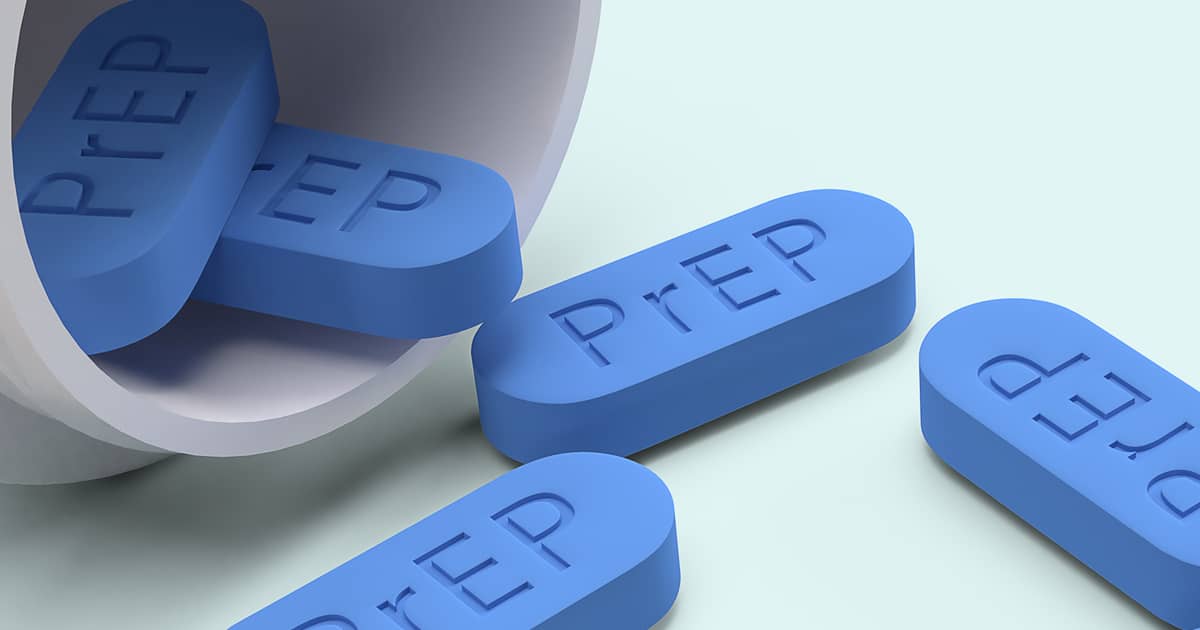As of December 2020, 930,000 people across the world are enrolled in a pre-exposure prophylaxis program (PrEP program), PrEP Watch reported. While this information doesn’t capture the complete picture (some people get access to PrEP through private programs that aren’t included in the statistics), they show the impressive progress being made in the fight against the human immunodeficiency virus (HIV).
PrEP is one of the biggest breakthroughs in the fight against HIV and AIDS. When administered correctly, the pre-exposure prophylaxis pills can reduce the risk of contracting HIV by as much as 99 per cent.
The problem with PrEP administration is that such programs used to be most widespread in Western countries. More troubled parts of the world experienced issues with the easy distribution and access to the life-saving prophylactic option.
Luckily, the tables have started to turn. Some of the latest data from Africa is showing that countries on the continent have grown the administration of PrEP by leaps and bounds.
Africa Now Accounts for 50% of the World’s PrEP Users
New Scientist reported on February 2, 2021, that almost 50 per cent of the world’s PrEP users are now located in Africa.
A major increase in PrEP use was registered in Sub-Saharan Africa over the course of 2020. The increase in new users overall reached 300,000 people on an annual basis. In Sub-Saharan Africa, the number of new PrEP users increased from 4,154 in 2016 to over 517,000 in 2020. That number now represents 56 per cent of all PrEP users across the world.
Of the 10 countries in the world that have the highest PrEP adoption rate, seven are located in Sub-Saharan Africa.
South Africa and Kenya lead the way. Zambia and Uganda are two other countries that have achieved excellent results as far as PrEP adoption goes.
How the Change Came About
Several factors contributed to the positive change in Sub-Saharan African countries.
In countries like South Africa and Kenya, more effortless funding access and new guidelines made all the difference. Governments set ambitious new targets for PrEP propagation and they backed such efforts through the provision of sufficient financial resources.
One of the biggest advancements is the ready availability of PrEP to the general population of a country. In many Sub-Saharan nations, PrEP is readily available to anyone interested in prevention and not just to high risk groups like men who have sex with men. This is one of the biggest differences between African countries and the Western world where PrEP availability is quite restricted to specific segments.
The Next Steps
While the African progress registered in the beginning of 2021 paints a positive picture, there’s still room for improvement, the New Scientist report suggests.
One of the additional opportunities that could be enabled for more effortless access is the general availability of PrEP through pharmacy networks in Sub-Saharan Africa.
Awareness and popularisation campaigns will also be required. According to the report, many people living in African countries still don’t know about the existence of HIV PrEP or how to gain access to it. Normalising the medications will lead to higher demand and even more widespread adoption campaigns, the conclusion is.
Non-profit organisations also state that Covid-19 measures and attempts to curb the pandemic have also lead to issues with HIV testing and the administration of PrEP. And while there’s no data about the impact that the pandemic has had on African programs, researchers believe it has slowed down to further increase the availability of prophylactic options like PrEP and HIV post-exposure prophylaxis or PEP.
…And Some Barriers to Overcome
Sub-Saharan African countries (and many other parts of the world) still have to deal with additional distinctive barriers standing in the way of PrEP accessibility. Institutional and administrative hindrances are being overcome but societal issues will also need to be tackled.
According to a Current Opinion in HIV and AIDS report, there are two very prominent issues that interfere with the spread of HIV prevention programs.
The first one is societal stigma that still surrounds sexually transmitted infections, getting tested regularly and seeking prophylactic or treatment options.
Secondly, young women in Sub-Saharan Africa seem to have a low HIV risk perception. A study on the topic was published in the BMC Public Health journal. According to researchers, the likelihood of considering oneself a high risk individual did not increase with a history of STI or respondent age – two strong predictors of HIV risk. Risk perceptions among the women participating in the study were linked to a very high level of stigma, as well as misconceptions like the widespread wrong belief that male circumcision reduces the risk of HIV infection.
The Power of Prophylaxis
At the time being, regular HIV testing and prophylaxis through HIV PrEP and PEP are the most effective ways to control the spread of the viral infection.
Luckily, all these are readily available in most parts of the world, including Singapore.
Singaporean sexual health facilities like Shim Clinic facilitate testing, STI consultations and the administration of prophylactic options. You can visit the clinic during working hours every day to get tested or to inquire about HIV PEP and PrEP.
Sources of information:
- Adepoju, P. (n.d.). African nations lead the world in offering PrEP HIV prevention drug. Retrieved February 11, 2021, from https://www.newscientist.com/article/2266273-african-nations-lead-the-world-in-offering-prep-hiv-prevention-drug/
- Maughan-Brown, B., & Venkataramani, A. S. (2017, July 21). Accuracy and determinants of perceived HIV risk among young women in South Africa. Retrieved February 11, 2021, from https://bmcpublichealth.biomedcentral.com/articles/10.1186/s12889-017-4593-0
- PrEP for Africa: What we have learnt and what is needed to move to program implementation. (2016, January 11). Retrieved February 11, 2021, from https://www.ncbi.nlm.nih.gov/pmc/articles/PMC4900687/

